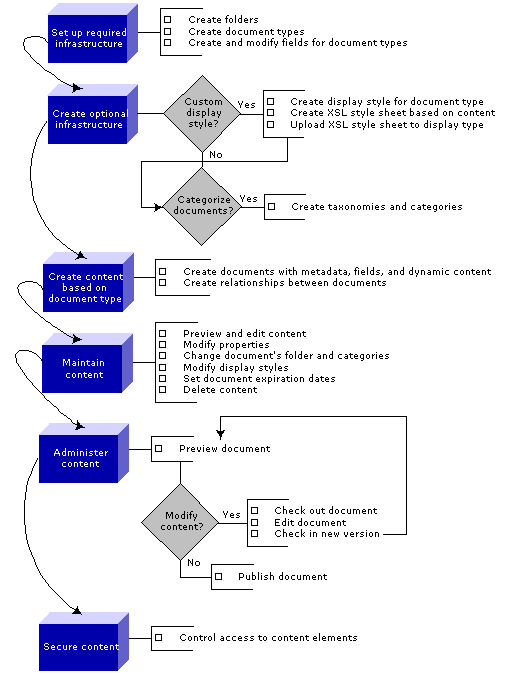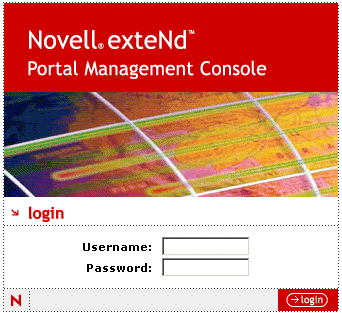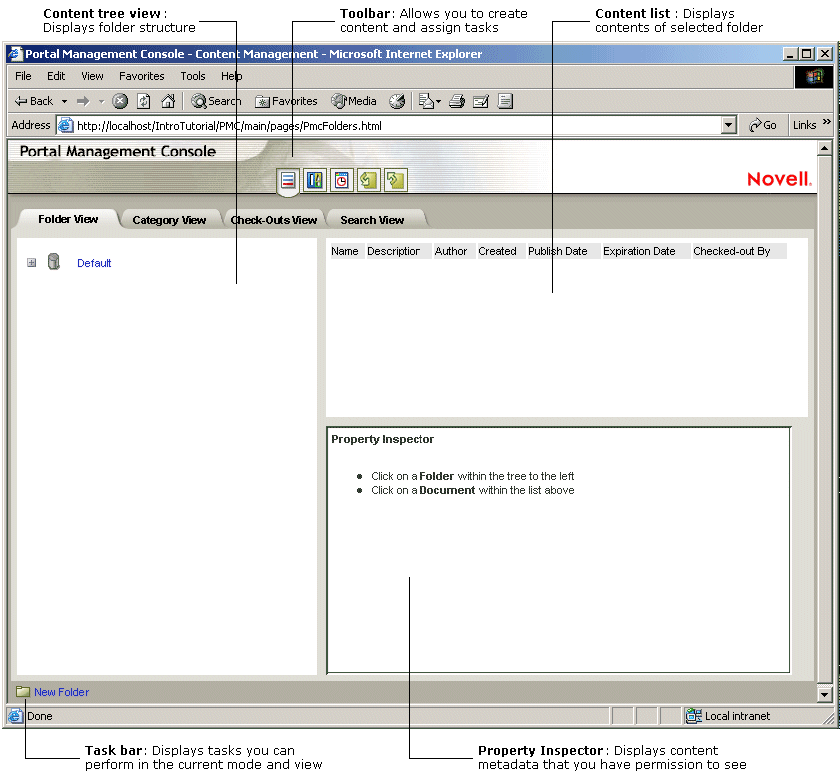
Content Management Guide
CHAPTER 12
This chapter describes what tasks you can perform with the Content Management Subsystem Administration Console, or CMS Administration Console. It has these sections:
IMPORTANT: Along with exteNd Director, you must have Microsoft Internet Explorer Version 5.5 or higher installed for running the CMS Administration Console.
You can use the CMS Administration Console to perform all tasks related to managing content throughout its dynamic life cycle in the exteNd Director application.
The following diagram presents the recommended order and interaction of these tasks during a typical CMS Administration Console session:

 For more information on how to perform these tasks with the CMS Administration Console, see these sections:
For more information on how to perform these tasks with the CMS Administration Console, see these sections:
Importing and exporting documents In addition to the CM tasks shown in the diagram above, the CMS Administration Console allows you to import and export documents.
 For more information on how to import and export documents using the CMS Administration Console, see Importing and Exporting Content.
For more information on how to import and export documents using the CMS Administration Console, see Importing and Exporting Content.
You can access the CMS Administration Console by selecting Content Management from the Director Administration Console (DAC).
 For information about how to access the DAC, see the section on accessing the DAC in Developing exteNd Director Applications.
For information about how to access the DAC, see the section on accessing the DAC in Developing exteNd Director Applications.
From an EAR project, the CMS Administration Console login page looks like this:

Log in by entering your user name and password and then clicking OK.
NOTE: Check with your administrator to make sure you have the necessary user privileges for performing the CM tasks assigned to you. For more information, see Managing Content Security.
The main CMS Administration Console page opens in your browser, as described in the next section.
When you start the CMS Administration Console, the main page appears—as in this example:

The CMS Administration Console has several views and modes that you control via interactive controls—as follows.
The CMS Administration Console consists of the following interactive controls:
To switch between modes:.
To display views of the content infrastructure:
 For more information about folders and categories, see Subsystem infrastructure. For information about checking out documents, see Checking documents in and out. For information about finding documents with the Search facility, see Searching Content.
For more information about folders and categories, see Subsystem infrastructure. For information about checking out documents, see Checking documents in and out. For information about finding documents with the Search facility, see Searching Content.
Displays:
Displays the list of documents in the selected folder, along with identifying information such as name, author, description, create date, expiration date, publish date, and checkout status.
Provides functions based on the current mode and view.
Displays properties for selected documents, folders, taxonomies, and categories.
The Property Inspector is context-sensitive and permission-sensitive. It displays interactive controls and tabbed panes of information based on the object you select and the permissions associated with your user ID.
For example: if you do not have WRITE permission, you cannot edit documents and the Property Inspector will not display Check-In and Check-Out controls; if you do not have PROTECT permission, you cannot set security on content and the Property Inspector will not display a Security tab.
Copyright © 2003 Novell, Inc. All rights reserved. Copyright © 1997, 1998, 1999, 2000, 2001, 2002, 2003 SilverStream Software, LLC. All rights reserved. more ...